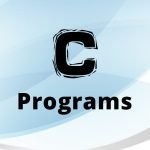 Algorithms and Bugs (Kids Get Coding) Ebook
Algorithms and Bugs (Kids Get Coding) Ebook
Considered the most practical and easy-to-read programming guide you can get for your little programmers, this book is written in a fun and simple way, explaining the basics of programming specifically the algorithms. How to write an algorithm and what to do when he’s full of bugs? Get Algorithms and Bugs (Kids Get Coding) Ebook and find out!
Whom is this book for?
This book is primarily designed to help kids from 5 to 8 years of age at the key stage 1 computing curriculum. However, if your 5-8 year-olds are already familiar with the basics, then they might get bored with this simple approach guide.
Download: Programming for Kids (5 to 8 years old) Algorithms and Bugs – Kids Get Coding
What’s inside?
At the beginning of your new programming guide, you will meet Data Duck, a computer-programming mastermind. His task is to “jump in” wherever you need an extra tip or an explanation.
The book’s structure is wrapped around the four basics of programming: how algorithms are used to give the computer instructions; how you set up an algorithm, how can you change it and adapt it, how computers make decisions using IF statements and how to predict the outcomes and lastly, what do to if the algorithm is full of bugs and how to debug it.
In the first section of the book, the authors explain the very basics of algorithm programming. What are algorithms? How they look like? How they give the instructions to the computer? The main point of this section is to give the readers the understanding of what the algorithms are and how they look like.
Once you get to know algorithms and their basic features, you now head to meet their practical side. That is to mean you get to know how to write an algorithm. This is another step-by-step part of the book where the authors use nicely illustrated instructions with exercises that are performed online to explain this not-so-easy to understand process. The reader thus gets the chance to learn from several different sources not only by reading, but in the actual, real-time situation as well.
The next step is to learn how to change and adjust algorithms in order to implement them in a digital device system. This part of the book is about how to implement the written algorithm as a computer program and what to expect to happen. In most cases, young programmers lack the knowledge of proper algorithm writing, so the purpose of this section is to explain how to put their written algorithms to work. On the other hand, the reader gets the insight as to what is happening both on the inside and on the outside of the programming process. The motive here is to learn how one simple looking algorithm looks like when it is transferred into a visible component of the computer program.
Another part of the programming is how computer actually performs and reads algorithms. The core of this part of the book is the very basic nature of the programming itself: how computer makes decisions using IF statements and how can you predict the outcomes (and potential bugs) of this decision-making system.
After explaining the first part of the subject , the authors continue by touching upon bugs – the errors in the algorithms and computer codes that prevent program from working properly. This section is based on creating and debugging very simple programs, giving the reader the opportunity to learn how to solve errors and adjust algorithms in the actual digital environment.
An important part of this book is its interactive nature. From practical activities and exercises to help and assist in learning to the links to the online activities, this book introduces a very practical “how-to” guidance in learning the basics of programming. Look to it for some intimate lessons on basic computer algorithms.
Ratings and comments
The overall impression of the readers (mostly moms and dads) is that the book is written in a fun and very understandable manner, facing the needs of the youngest programmers. However, parents are disappointed, because the book doesn’t quite meet the need of the selected age group. They stated that book should be targeted at 4-6 year-olds, because most of the 5-8 year-olds are very well versed in programming, thus finding this book little boring.
Final verdict
Very comprehensive programming guide for kids. Algorithms and Bugs (Kids Get Coding) Ebook will fulfill your expectations. The subject of the book is covered in a very simple and practical manner, with some great exercises (which are performed online) and illustrations.
Download: Programming for Kids (5 to 8 years old) Algorithms and Bugs – Kids Get Coding





